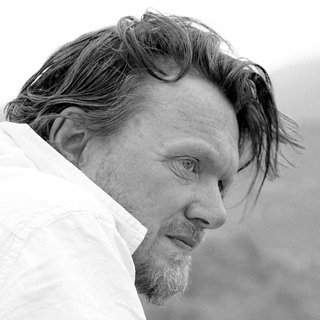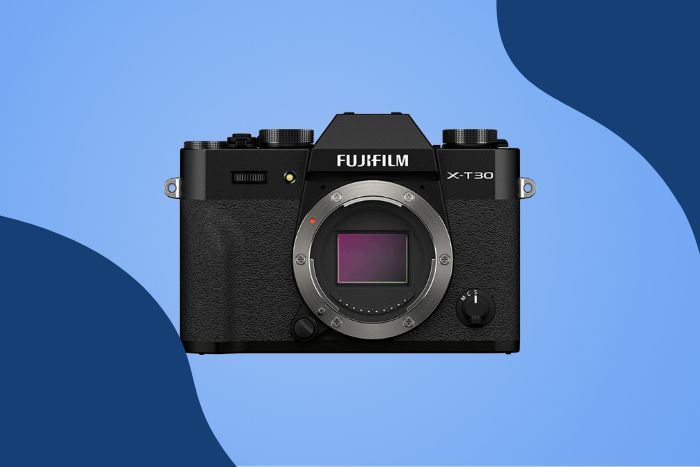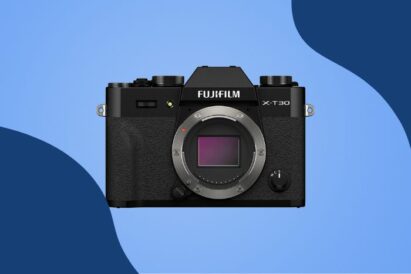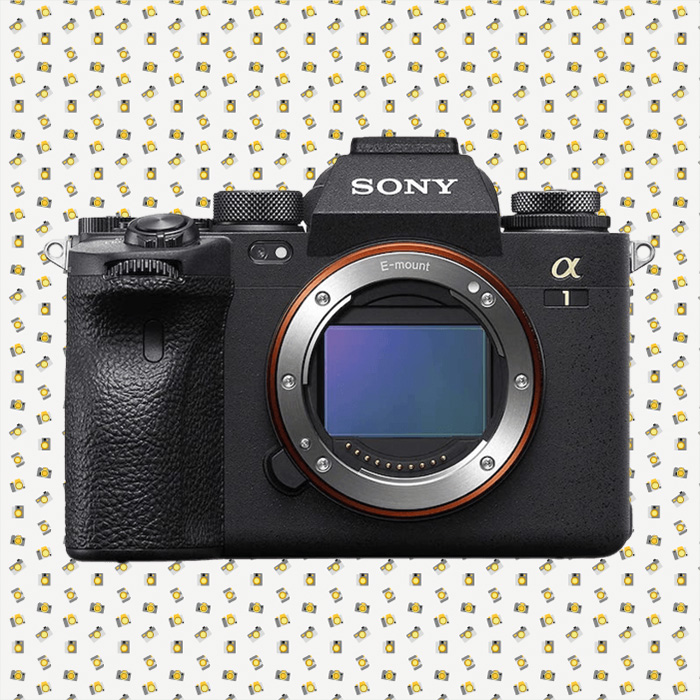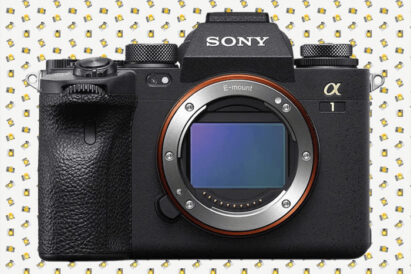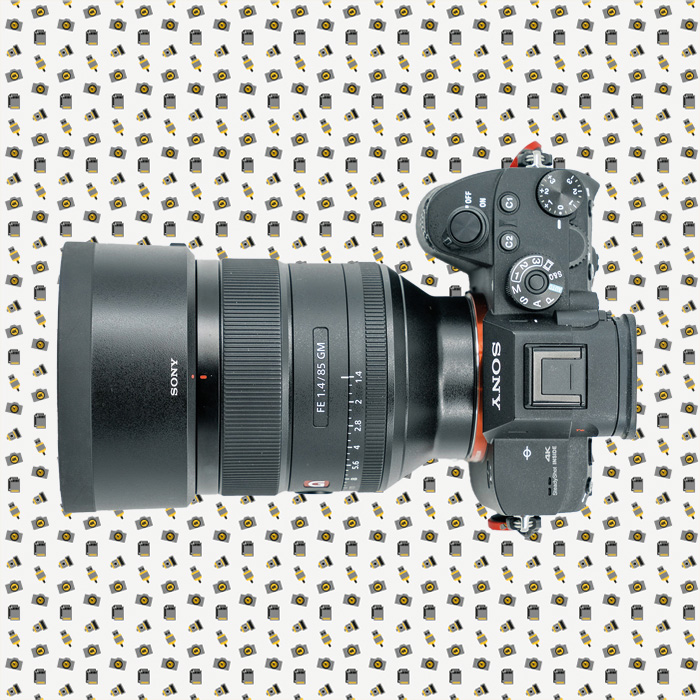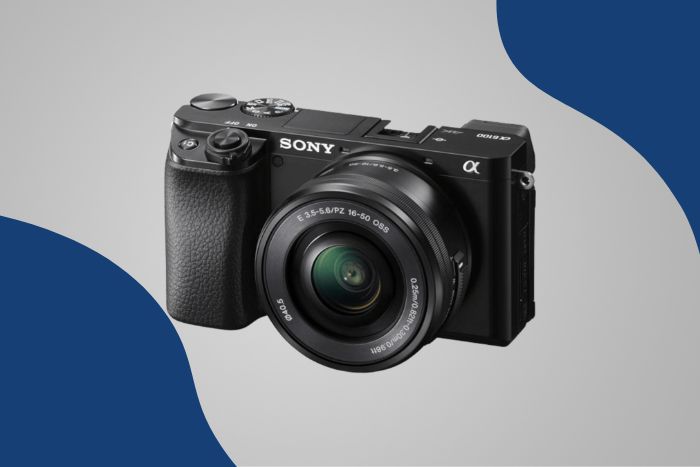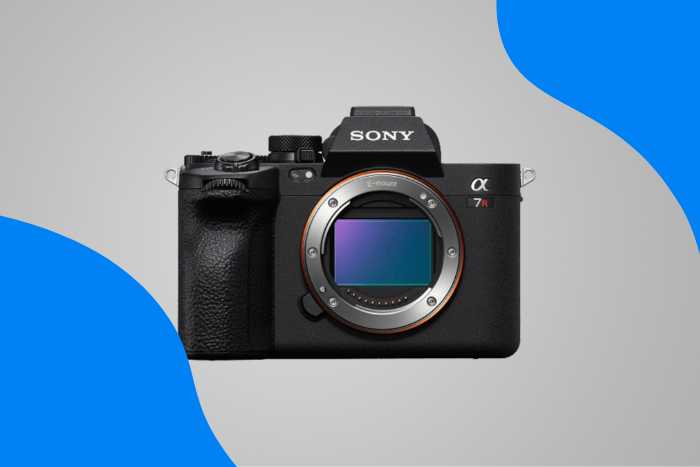It’s hard not to feel inspired by the images beamed back from the James Webb Space Telescope. It might make you wonder what the best astrophotography camera is. Well, I can’t promise results like NASA gets. But I can guide you to the current best option for capturing the beauty of the stars.
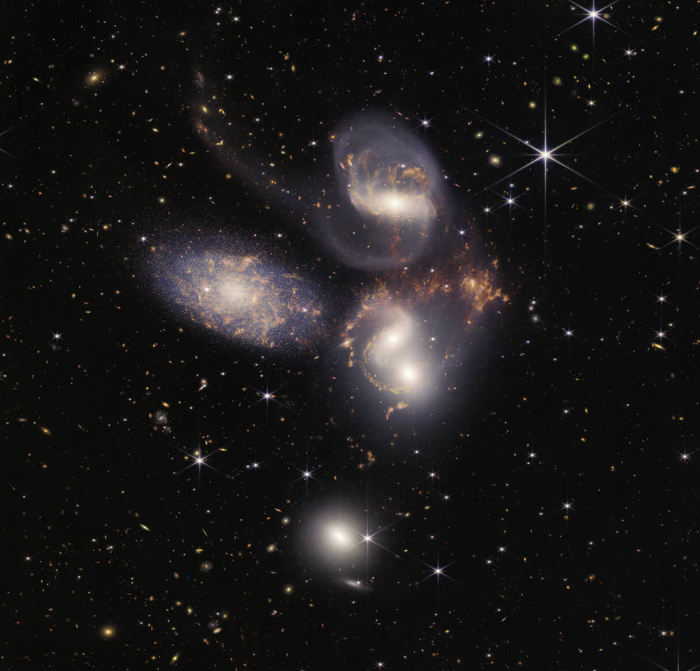
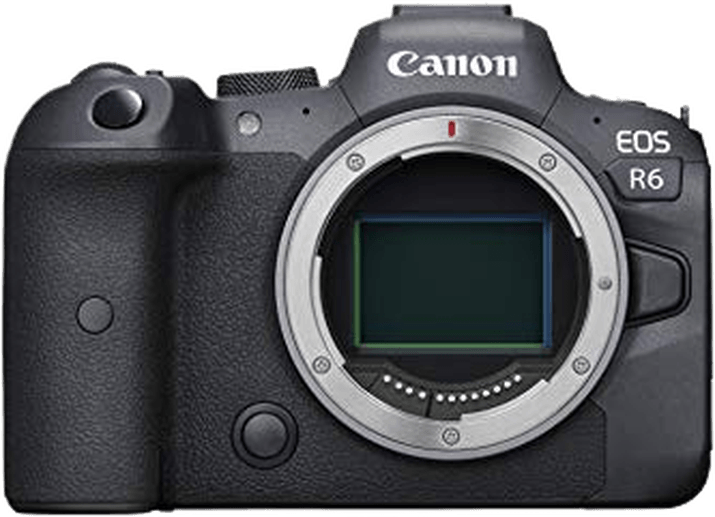
Canon EOS R6
The good news is that today’s DSLR and mirrorless cameras offer easier-than-ever entry to the mysterious world of astrophotography.
ISO speeds that were the stuff of fantasy a few years ago are readily available. Full frame DSLRs like the Nikon D850 and mirrorless cameras like the Canon EOS R6 give you great night shooting capabilities. Meanwhile, a dedicated astronomy camera like the Altair GPCAM2 327C offers you another route.
What is the Best Camera for Astrophotography in 2023?
Before we look closely at the 12 best cameras for astrophotography, here’s a quick roundup of my top 9 picks:

- Great all-round performer
- High ISO range
- Fast Digic X processor
- Top-quality image satbilization
- Great ergonomics
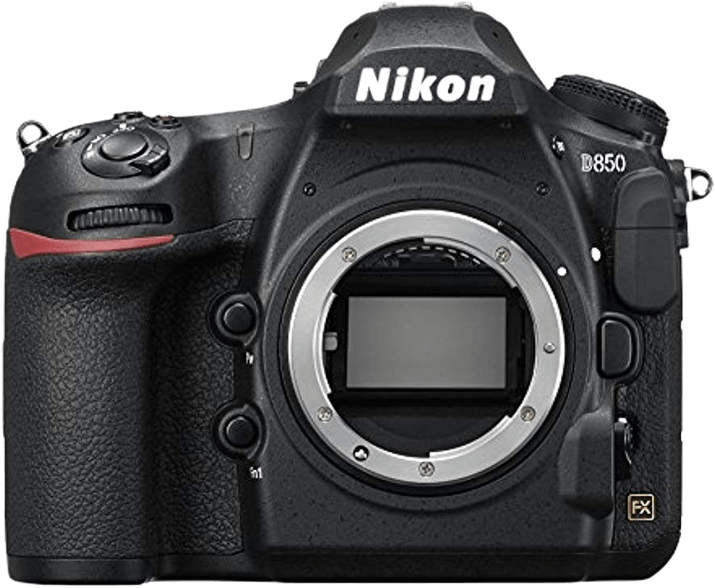
- Tilting screen
- Excellent image quality
- Long battery life
- High pixel-count sensor
- Great weather sealing
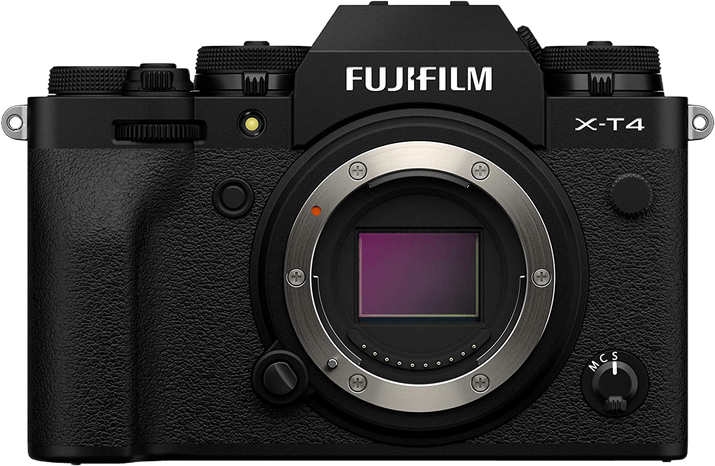
- Fully articulated screen
- Excellent image stabilization
- Stylish looks
- Easy-to-use controls
- Good timelapse performance

- Full frame in a compact body
- High max ISO
- Low noise at high ISOs
- Tilting touchscreen
- 5 stops image stabilization
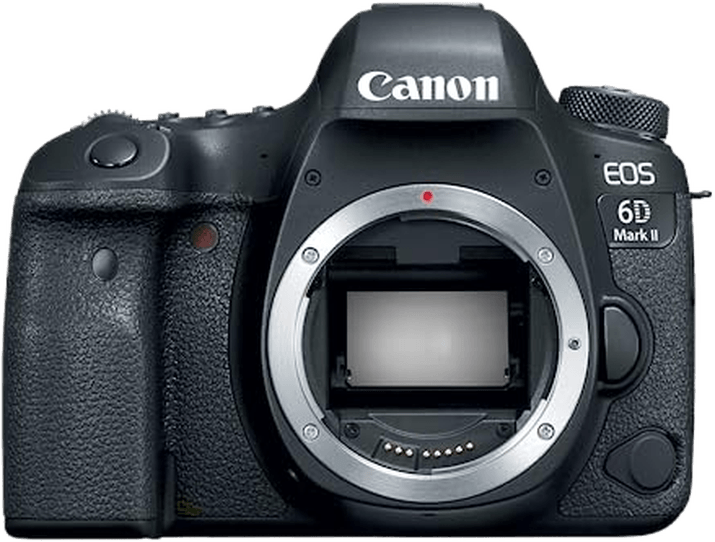
- Good value for full-frame DSLR
- Wi-Fi and GPS
- NFC and Bluetooth
- Great build quality
- Reliable AF system
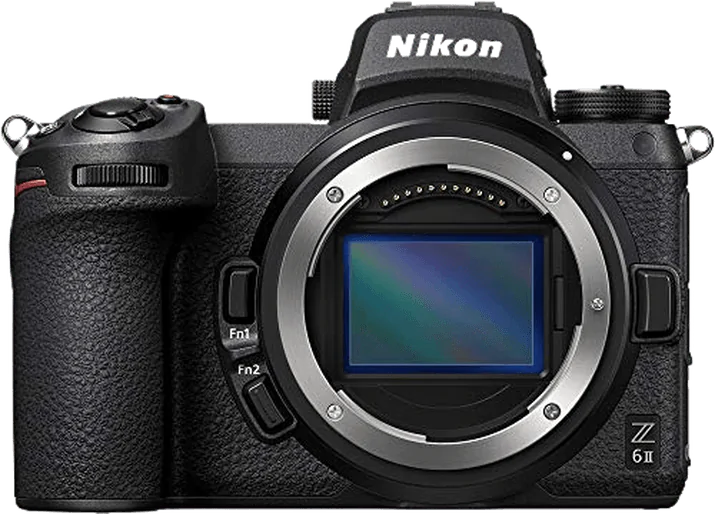
- Excellent low light AF
- Two memory card slots
- Tilting touchscreen
- Good lens compatability
- ISO can be pushed high
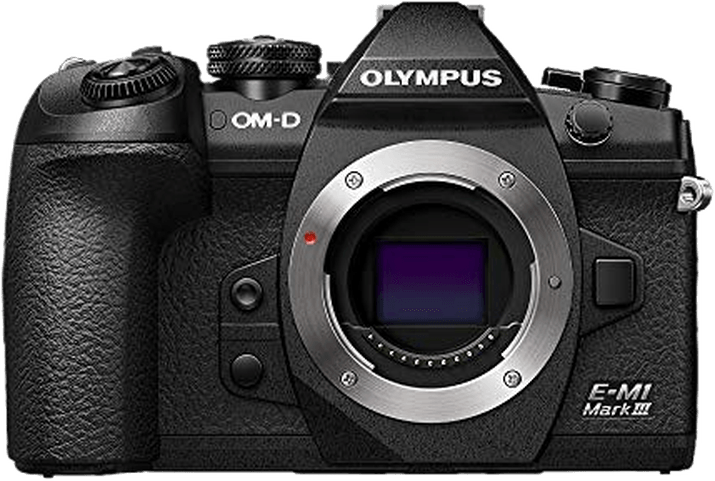
- Starry Sky AF mode
- Excellent image stabilization
- High-speed RAW capture
- Fully-articulated touchscreen
- 121-point AF
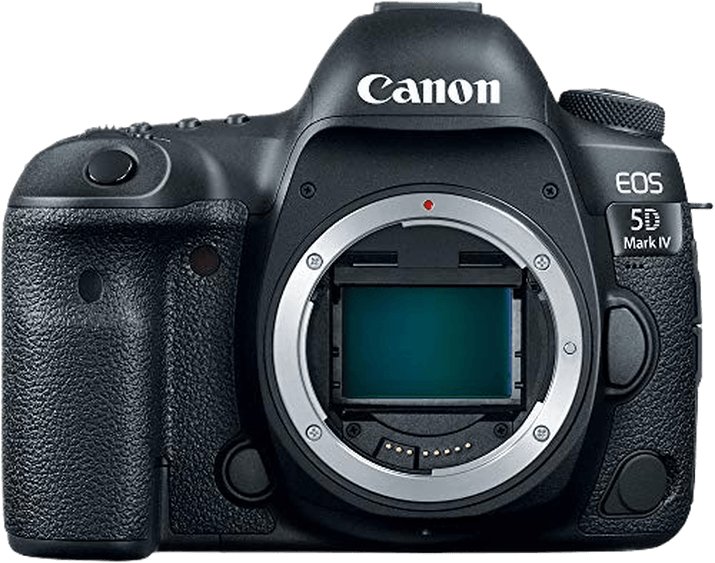
- High max ISO
- Large pixel count
- Touchscreen
- Good low light AF
- Excellent all-round DSLR
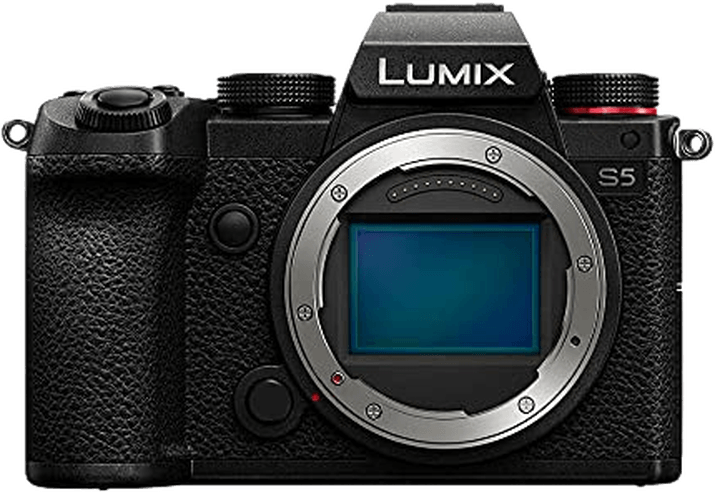
- Compact size for full-frame
- Excellent video performance
- High dynamic range at high ISO
- High max ISO
- Dual memory cards
12 Best Astrophotography Cameras in Detail
I’ve chosen three specialist astrophotography cameras that attach to telescopes. And a selection of DSLRs and mirrorless cameras that will give you great results with your night sky imaging.
1. Canon EOS R6
Our Top Camera for Astrophotography
no

| Camera Type |
Camera Type
|
| Megapixels |
Megapixels
20.1 MP |
| Sensor Format |
Sensor Format
|
| Sensor Size |
Sensor Size
23.9 x 35.9 mm
|
| Frame Rate |
Frame Rate
20 fps |
| Autofocus Points |
Autofocus Points
1,053 |
- Relatively affordable
- Excellent in-body image stabilization
- Compact and ergonomic design
- Fantastic expandable ISO range
- Rapid burst speeds
- Low megapixel count compared to closest competitors
- Interface is challenging to navigate
- EVF drains the battery
- Camera heats up shooting 4K / 60 fps
The Canon EOS R6 is an impressive full frame sensor mirrorless camera. The relatively low pixel count for such a big sensor is not necessarily a bad thing. This is especially true for astrophotography because each pixel absorbs more light. The EOS R6 certainly produces stunning images.
The electronic viewfinder means that you’re not restricted to the LCD screen. That screen, though, is fully-articulated and offers touch screen convenience. Another standout feature is the ISO range. Even in its natural setting, the maximum ISO is 102,400.
The body is weather sealed and the range of available lenses is growing. And if that wasn’t enough, you can use a Canon adaptor to use your existing EF or EF-S lenses. You have up to 20 fps with the electronic shutter for general use. You also have 4K video with almost no cropping. And a whopping eight stops of image stabilization when using RF mount lenses.
2. Nikon D850
Best DSLR Camera for Astrophotography
no

| Camera Type |
Camera Type
|
| Megapixels |
Megapixels
45.7 MP |
| Sensor Format |
Sensor Format
|
| Sensor Size |
Sensor Size
23.9 x 35.9 mm
|
| Frame Rate |
Frame Rate
7 fps |
| Autofocus Points |
Autofocus Points
153 |
- Fantastic overall image quality
- Excellent 3D continuous AF tracking
- Long, 1,840-shot battery life
- Durable, weather-sealed construction
- Sharp 4K/30p Ultra HD video
- No customizable shooting presets
- Slow autofocus in Live View
- Needs an expensive XQD card
- Rolling shutter noticeable in 4K video
- Slow 7 fps or 9 fps with an expensive battery grip
My colleague Nick Dale ranks the Nikon D850 as “the best Nikon DSLR on the market.” And it’s easy to see why. Many of those reasons also transfer well to an astrophotography camera. It has a 45.7 MP sensor, a tilting screen, and 4K video.
It also has illuminated controls which is a real bonus at night. As expected on a professional camera, the weather sealing will reassure you if the night gets dewy.
Night sky photographers will appreciate the optical viewfinder and long battery life. Less impressive is the AF when using the tiltable screen. However, the screen itself is clear and convenient to use.
A professional camera like the D850 is heavy, which helps prevent camera shake. Assuming you have (as you must) a good quality tripod. As a bonus, of course, you get a top-quality DSLR for general use as well.
3. Fujifilm X-T4
Best APS-C Mirrorless Camera for Astrophotography
no

| Camera Type |
Camera Type
|
| Megapixels |
Megapixels
26 MP |
| Sensor Format |
Sensor Format
|
| Sensor Size |
Sensor Size
23.5 x 15.6 mm
|
| Frame Rate |
Frame Rate
20 fps |
| Autofocus Points |
Autofocus Points
425 |
- Decent APS-C BSI-CMOS sensor
- A great frame rate of 15 fps
- 6.5 stops of image stabilization
- 4K video (DCI or Ultra HD) up to 60 fps
- A fully articulating rear touchscreen
- 12 Film Simulation modes
- Expensive for an APS-C camera
- Autofocus speed and accuracy depends on the lens and the subject
- Unreliable face and eye detection
- No external battery charger provided
- Limited video recording time
- No subject tracking in video mode
The Fujifilm X-T4 is an APS-C mirrorless camera. It is highly regarded as a general-purpose digital camera. And it is easily one of the most stylish high-specification cameras available. Looks aren’t everything, of course. Especially in the dark when you’re taking pictures of the solar system.
But the X-T4 isn’t just a pretty face. It has a high ISO range, even before expansion. And some people find the old-fashioned dials easier to operate in the dark. You won’t find as many lenses to fit the camera body’s X-mount system as there are for, say, Canon EF. But there are plenty to choose from.
The fully articulated screen is a real bonus for astrophotography. For some people, its strong performance with timelapse photography is also a winner. And the Fujifilm X-T4 will also serve you well as a general digital camera.
You can check out our posts comparing the Fujifilm X-T4 to the Fujifilm X-T3, Nikon z9, or Sony a7R IV for extra context.
4. Sony a7 III
Best Sony Mirrorless Camera for Astrophotography
no

| Camera Type |
Camera Type
|
| Megapixels |
Megapixels
24.2 MP |
| Sensor Format |
Sensor Format
|
| Sensor Size |
Sensor Size
23.8 x 35.6 mm
|
| Frame Rate |
Frame Rate
10 fps |
| Autofocus Points |
Autofocus Points
693 |
- Quick and accurate 693-point AF
- Wide ISO range with a low 50 setting
- Outstanding dynamic range and low-light performance
- Records stunning 4K video and has live stream capabilities
- Noise reduction can remove details
- Front heavy with big lenses
- Menu system is difficult to get used to
The Sony A7 III is another full frame mirrorless camera with impressive ISO capability. Like the Canon EOS R6, the top end is expandable to 204,800. Sony has arguably done a better job of tackling the noise that often comes with high ISO and long exposures.
Again, a full frame sensor with “only” 24.2 MP might seem underwhelming. But there is no doubting the quality of the images produced by this very capable performer.
Despite its full frame sensor, the A7 III is quite compact and easy to carry. If you’re toting a camera, lenses, a tripod, and flasks of tea, every little bit helps. The 3-inch touchscreen is of the tilting type. All you need for astrophotography, but perhaps not as useful for some other uses.
The 693 focus points cover more than 90% of the image area and help to make the A7 III’s AF performance quick and reliable. 5-axis stabilization gives up to +5 stops exposure. It’s not necessarily an issue for astronomy cameras. But a consideration for when you’re using it elsewhere.
5. Canon EOS 6D Mark II
Most Affordable Canon Choice for Astrophotography
no

| Camera Type |
Camera Type
|
| Megapixels |
Megapixels
26.2 MP |
| Sensor Format |
Sensor Format
|
| Sensor Size |
Sensor Size
24 x 35.9 mm
|
| Frame Rate |
Frame Rate
6.5 fps |
| Autofocus Points |
Autofocus Points
45 |
- Fantastic image quality
- Impressive 45-point AF system
- Built well and nice to handle
- Handy built-in Wi-Fi and GPS
- Low dynamic range
- Relatively limited video capabilities
- Only one memory card slot
- No USB charging
The Canon EOS 6D Mark II is the latest version of Canon’s entry-level full frame DSLR. It has the same screen articulation as the R6 but without touchscreen capability. The pixel count isn’t huge at 26.2 MP. And the ISO tops out at 40,000, which is a long way short of the best cameras in this review.
We have to remember, of course, that this is the budget end of the full frame DSLR market. Compared with other cameras, the pixel count, video capability, or AF points will fall short. But this is a full frame camera and takes the full range of Canon’s EF lenses as well as those from other manufacturers.
It also has a good set of practical features. Communication options include Wi-Fi, NFC, and low-energy Bluetooth. A GPS chip will help you identify exactly where you captured those night sky images from.
6. Nikon Z6 II
Most Affordable Nikon Choice for Astrophotography
no

| Camera Type |
Camera Type
|
| Megapixels |
Megapixels
24.5 MP |
| Sensor Format |
Sensor Format
|
| Sensor Size |
Sensor Size
35.9 x 23.9 mm
|
| Frame Rate |
Frame Rate
14 fps |
| Autofocus Points |
Autofocus Points
273 |
- Excellent low-light focusing
- Lightweight and portable
- Superb low-light dynamic range
- Dual memory card slots
- Autofocus can be slow
- Relatively short battery life
- Lower MP count than main competitors
- Needs more customizable buttons
Not quite an entry-level full frame camera, the Nikon Z6 II introduced some improvements over the original Z6. Most notably, a second memory card slot and improved high-speed shooting.
The two cards are definitely a bonus for an astrophotography camera. High image quality is going to rely on RAW images and post-processing. And RAW files are huge compared to JPEGs.
The Z6 II has a tilting screen. It isn’t fully articulated, which is fine for the night sky. You might find it limiting in other shooting situations. ISO range doesn’t stretch the boundaries but can be pushed from its basic 51,200 up to 204,800. But the Nikon can focus in -6 EV light. Nikon says this is equivalent to 1/4 moonlight.
Z-mount cameras can use an adapter to fit Nikon F-mount lenses, so there is an absolute wealth of lenses out there. Being able to track down second-hand lenses can help reduce the up-front costs. Or, if you have a bag full of F-mount lenses, the Z6 II becomes more attractive.
7. Olympus OM-D E-M1 Mark III
Best Entry-Level Astrophotography Camera
no

| Camera Type |
Camera Type
|
| Megapixels |
Megapixels
20 MP |
| Sensor Format |
Sensor Format
|
| Sensor Size |
Sensor Size
17.4 x 13 mm
|
| Frame Rate |
Frame Rate
60 fps |
| Autofocus Points |
Autofocus Points
121 |
- Multi-shot, handheld, high-res mode
- Compact and lightweight
- 60 fps RAW and JPEG image capture
- 7 stops of image stabilization
- Simulated Live ND filters
- Quick-and-easy Pro Capture (action) and Starry Sky AF modes
- Excellent video options
- Relatively low sensor resolution
- Not the best when pushing the high ISO range
- Unreliable subject tracking
- No vehicle and train recognition AF modes like the E-M1X
- Complicated menus
- Relatively short 420-shot battery life
It would be remarkable if the OM-D E-M1 Mark III didn’t make it into this review because it has a “Starry Sky” autofocus mode. It does exactly what it says. When engaged, it looks for stars in the frame. Then it acquires and locks focus on them.
Depending on the circumstances, this can take a few seconds. But it produces some amazing results. And it can accommodate wide-angle whole-sky photos or telephoto images aimed at smaller sections of the sky. Seven stops of image stabilization mean it’s possible to use the Starry Sky AF even with handheld shots on wide-angle lenses.
The OM-D is a Micro Four Thirds camera. The sensor size is small compared to full frame sensors. But it is widely supported, especially with video cameras. There is a fully-articulated touchscreen and 121-point AF system.
There’s a decent maximum ISO of 25,600, and a built-in two-shot multiple exposure facility means you can use the Starry Sky mode to capture images of the stars, then re-expose for some interest in the foreground.
8. Canon EOS 5D Mark IV
Best Canon DSLR for Astrophotography
no

| Camera Type |
Camera Type
|
| Megapixels |
Megapixels
30.4 MP |
| Sensor Format |
Sensor Format
|
| Sensor Size |
Sensor Size
24 x 36 mm
|
| Frame Rate |
Frame Rate
7 fps |
| Autofocus Points |
Autofocus Points
61 |
- Quality sensor produces detailed and vibrant images even at high ISOs
- Dual Pixel AF with eye detection
- User-friendly touch-to-focus screen
- 900-shot battery life
- Cinema-quality (DCI) 4K video
- Unreliable, imprecise subject tracking
- Limited dynamic range
- No in-body stabilization
- No bluetooth
- 64x crop factor with 4K video
The Canon EOS 5D Mark IV is a big, heavy beast with professional-level weather sealing. It gives the best protection against the elements this side of waterproof cameras. This can be important on outdoor shoots. It is a little handicapped by only having a fixed screen.
The Canon EOS 5D Mark IV also has a 30.4 MP sensor. In a full frame camera, that is not huge. But it does offer a nice balance between the number of pixels and pixel size. This makes for an impressive low-light performer.
High dynamic range is another feature of the 5D Mark IV. Coupled with a maximum boosted ISO of 102,400, you have every chance of taking low-noise, high-quality images in low light. One of the improvements Canon made over the 5D Mark III was with low-light AF. Whereas the older model would often hunt unsuccessfully for focus in the night sky, this has been greatly improved.
9. Panasonic Lumix DCS5
Best Panasonic Astrophotography Camera
no

| Camera Type |
Camera Type
|
| Megapixels |
Megapixels
24.2 MP |
| Sensor Format |
Sensor Format
|
| Sensor Size |
Sensor Size
23.8 x 35.6 mm
|
| Frame Rate |
Frame Rate
7 fps |
| Autofocus Points |
Autofocus Points
225 |
- Lightweight and portable
- Image stabilization to prevent camera shake
- Dual memory card slots
- Great 4K video capabilities
- Slow-burst shooting
- Short battery life
- Poor autofocus within camera class
- Limited L-mount lens range
Another camera with a very high maximum ISO is the Panasonic Lumix DCS5. It can be expanded to 204,800. Panasonic is probably best known in the camera world for its Micro Four Thirds mirrorless cameras.
The DCS5 is a full frame camera with the slightly less-common Leica L-mount. There are fine L-mount lenses available, but it’s something to be aware of when choosing a camera. The DCS5’s sensor has very impressive dynamic range in low light and high ISO settings. It copes well without introducing too much noise.
It will also serve you well as a day-to-day camera when life calls you away from the field of astrophotography.
10. ZWO Optical ASI183MC
Best Deep Sky Astro Camera
This is the first of our specialist deep sky astrophotography cameras. A dedicated astronomy camera is worth looking at if you already have an astronomical telescope. It will use your telescope’s optics to capture the images.
This obviously has advantages because those optics have been designed solely for the purpose of deep-sky imaging. The downside is that you will not only need the telescope but also a computer to run the camera. This is fine, of course, but it’s not as easy as slinging your tripod over your shoulder and heading off into the fields.
The ASI183MC is a lightweight camera with a 20.4 MP sensor. It doesn’t have dedicated cooling, so it might produce more low-light noise than cameras. It can also shoot at 19 fps at full resolution.
Pros: Lightweight, high quality 20.4 MP sensor, large DDR buffer
Cons: No cooling, needs separate power supply
11. Bresser Full HD Deep-Sky Camera
Best Astrophotography Camera for the Night Sky
The Bresser Full HD Deep-Sky Camera is, as the name says, designed for solar, lunar, and deep-sky photography. It uses a Sony color sensor, which is noted for its low noise and low-light capture. Using the supplied software, you can capture at up to 20 fps at full resolution.
This CMOS camera body has a guide port. This allows specialized equipment to move the telescope with the movement of the stars (well, the Earth, actually). Multiple exposures taken using this method allow more detail to be captured, especially across the full dynamic range. Although a monochrome camera is normally the choice for solar photography, the Bresser copes well with capturing the Sun.
Pros:
Built-in guide-port, up to 20 fps recording, Region of Interest feature
Cons: Needs IR filter for moon and planets, doesn’t work perfectly with all imaging software
12. Altair GPCAM2 327C
Best Astrophotography Camera for Video
Another astrophotography camera with a Sony sensor is the Altair GPCAM2 327C. The Altair is easy to set up. As well as full resolution 18 fps shooting, the camera can capture video at 1080p.
This video can be fed live to a laptop or other visual display device. This is great if you want to allow others to see what the telescope is seeing live. I imagine astronomy classes or clubs would appreciate this feature.
Like most dedicated astronomy cameras, the Altair offers cheap entry into the world of deep-sky imaging and deep-sky astrophotography. The expense of optics has already been covered with your telescope.
Pros: Live video feed to computer, easy set-up, 18fps capture
Cons: USB 2.0 is starting to look a little old and slow
Our Verdict
There are three broad categories of cameras here. We have top-end, expensive, pro-level cameras that will cost you a pretty penny. They will serve you well as astrophotography cameras. They will also give exceptional service as daily cameras. Of these, my vote goes to the Canon EOS R6. This is such a competent all-around performer. Its performance as an astrophotography camera will not disappoint.
There’s no denying that category is expensive. So what about something cheaper? The problem is that low light performance is often the weak point of any cheap camera. After all, “photograph” roughly translates from Greek as “writing with light.” And the problem with night sky photography is the lack of that very thing. So capturing small amounts of light requires some expensive technology.

So none of these astrophotography cameras are cheap. But for something that is at the cheaper end, my choice is the Olympus OM-D E-M1 Mark III. For its effective implementation of the Starry Sky mode, it is a clear winner.
Finally, the third category of dedicated astronomy cameras. For me, the Altair GPCAM2 327C hits the right mix of affordability and performance. Sure, there are many dedicated astrophotography cameras out there. But the Altair is a good choice.

Canon EOS R6
Buyer’s Guide
As I’ve compiled this review, there have been two people in my mind. Firstly there’s the person with a telescope who wants to capture and share what they see in the night sky. My sister-in-law turned my wife off star-gazing forever at the age of seven. She would drag her out every night to look at the small patch of sky above their light-polluted garden.
You can avoid this by showing the highlights you have photographed. So let’s assume you have a telescope already and want to share the delight it brings. In that case, a dedicated telescope-mounted camera will be the best camera for astrophotography. It will also have the software and features specifically geared to getting the most out of your hobby. You might even want to splash out on a CCD camera, but they tend to be much more expensive.

The other person in my mind is someone who wants to take the occasional, perhaps even frequent, night sky photos. But you don’t want to invest in a telescope. And you’d like to get the best value from your purchase by having a great camera for your holiday photos as well as deep sky objects.
For the first person, the choice will come down to what you want to photograph, and what your telescope is capable of. Also consider how much you want to future-proof your purchase. For example, if the sun is your preferred target, then a monochrome camera is likely the best choice.
For the second person, the good news is that great astrophotography cameras will be great cameras. Low-light performance, as already mentioned, is a tricky thing. A camera manufacturer who has achieved good image quality under demanding conditions has not scrimped on technology.
One deciding factor for your purchase might be what you already have. If you’ve had Canon cameras for years, abandoning all your lenses would be a big step. A DSLR camera has many advantages, but it has drawbacks too. A mirrorless camera might suit your overall needs better.
Should I Use RAW or JPEGs?
The answer here is always RAW for astrophotography. You are working at the edge of what is possible in terms of gathering light. When your camera processes the light received to produce a JPEG, it will degrade the image. You need your editing software to process the light that has been registered. And you need to introduce as little noise as possible.

Should I Choose Mirrorless or DSLR Cameras?
As with all such discussions, there are pros and cons. Mirrorless cameras are generally smaller and lighter. They often have better screens, which are more likely to be articulated. They also eliminate one possible source of camera shake as there’s no mirror to slap up and down. On the other hand, the battery life is frequently inferior to that of DSLR cameras.
Some ranges of mirrorless cameras have a more limited range of available lenses. One advantage of the Canon EOS family is that lens compatibility can go back decades. So there are plenty of high-quality specialist lenses on the used market.
What Should I Know About ISO?
The ISO range of your camera determines how sensitive the sensor is. The higher the number, the more sensitive to light. If like me, you grew up with Ilford HP5 film feeling rather racy at ISO 400, then you might find numbers such as 204,800 rather mind-boggling. Partly this is because the ISO scale doubles the number for every stop of exposure.
But the main thing about high ISO numbers is that it is difficult for cameras to work with them without introducing noise. Discussions of noise quickly become very technical. But basically, it means showing things (usually colors) that aren’t actually there. Some cameras are better at keeping this noise to a minimum. These are the ones to look for when choosing the best cameras for astrophotography.
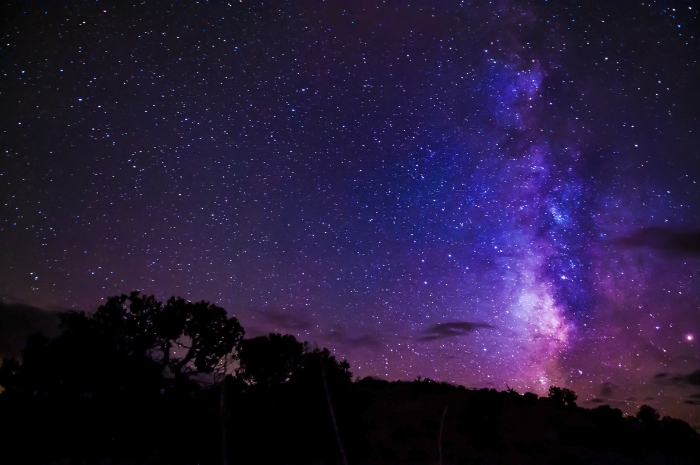
What About Using my Phone?
An idea from left field would be to try your phone. Nature obliged last night as I walked the dogs with my daughter and provided a clear sky. She happily snapped away at the stars with her iPhone 13 Pro.
As you can see below, the results were pretty impressive. These are as she took them. Had she used the RAW setting, I could also have edited them as you would any RAW image. So your high-end smartphone may satisfy your astrophotography cravings. Especially if you have a tripod mount.
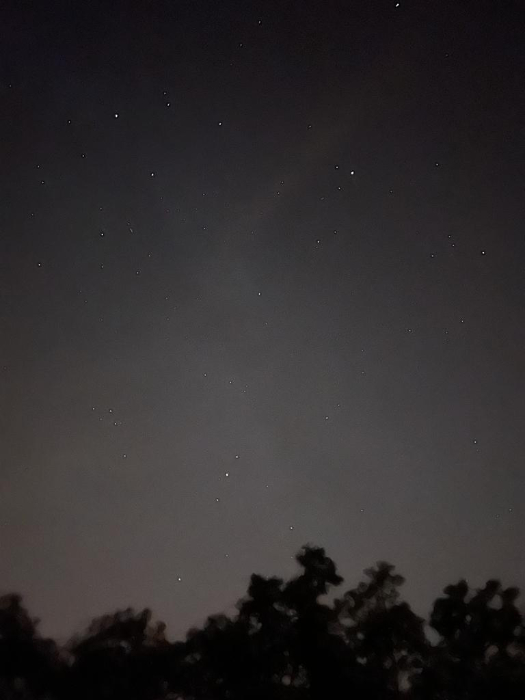
What Else Should I Think About?
Under this category, we can, in a sense, ignore deep-sky imaging and everything to do with it. You’re buying a camera, so you need it to meet your needs. And that choice will be very personal. I don’t mind lugging my EOS 5D Mark III around with me because its benefits outweigh the costs. For you, that might be a deal breaker.
It’s about finding the balance between what you want, what you need, and what you can afford. Then find the camera that is the best fit for those things. Perhaps the Canon EOS R6 shades the Nikon D850 on paper (Check our side-by-side comparison here!). But you have two excellent Nikon lenses. Is the Canon so good that you ditch the whole Nikon package? That’s a question only you can answer.

